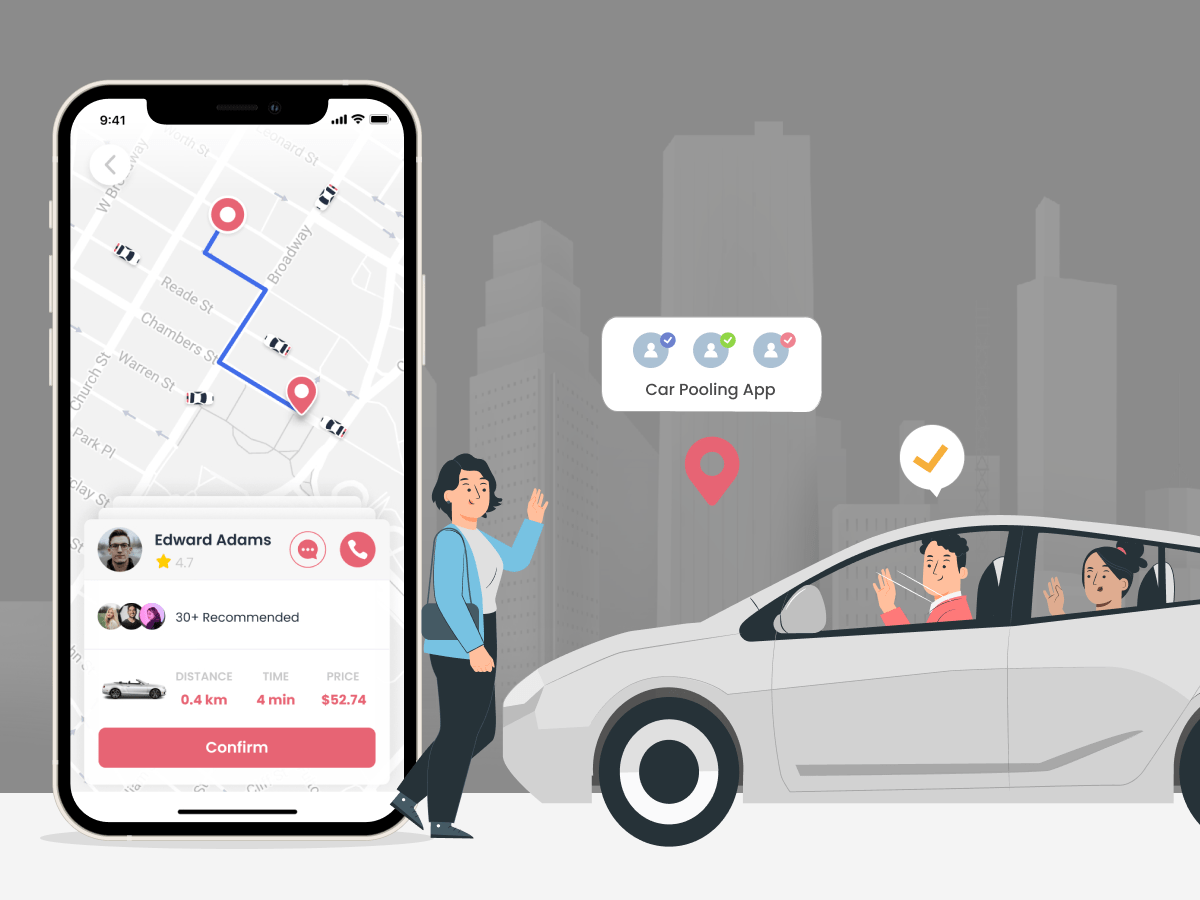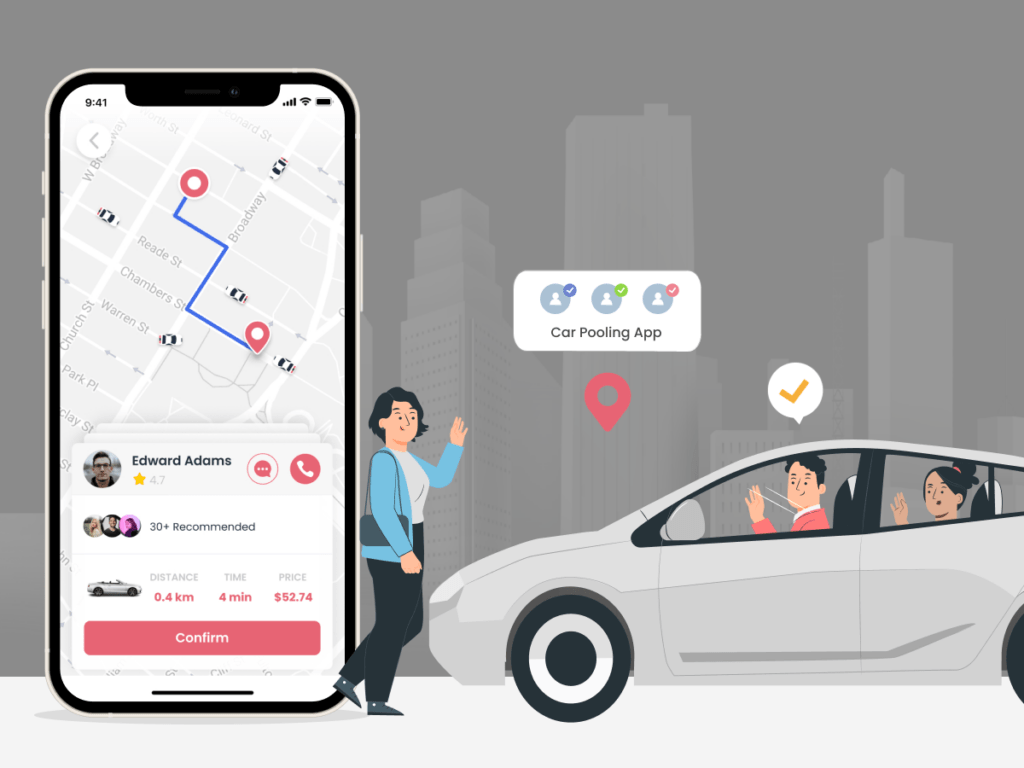

The rapid evolution of technology has brought about innovative solutions for enhancing corporate sustainability, cost-efficiency, and employee satisfaction. Developing a corporate ride-sharing application is a strategic step that businesses can take to address these objectives while contributing to a greener and more collaborative work environment. This guide outlines the key steps and considerations involved in the development of a successful corporate ride-sharing application.
Market Research and Analysis:
Begin by conducting thorough market research to understand the existing landscape of ride-sharing applications, both general and corporate-focused. Identify the specific needs of businesses and employees, uncover potential competitors, and gain insights into user preferences and pain points.
Define Core Features:
Based on your research, determine the core features and functionalities your corporate ride-sharing app should offer. This may include user registration, ride booking, payment integration, ride-matching algorithms, communication tools, route optimization, and reporting/analytics.
User Experience (UX) Design:
Create an intuitive and user-friendly interface that caters to both employees and administrators. Design a seamless navigation flow, clear call-to-actions, and an appealing visual identity that aligns with your brand.
Ride Matching Algorithm:
Develop a robust algorithm that efficiently matches employees with similar routes and schedules. Consider factors like distance, time of travel, and preferences to ensure optimal matches and minimize detours.
Payment Integration:
Implement secure and convenient payment methods within the app. Users should be able to pay for their shared rides seamlessly, whether through integrated wallets, credit/debit cards, or digital payment platforms.
Communication Tools:
Integrate in-app communication features such as chat or notifications to facilitate easy coordination between riders. This enhances the overall user experience and ensures smooth communication during ride arrangements.
Security and Privacy:
Prioritize the security of user data and information. Implement robust encryption, user authentication, and data privacy measures to build trust among users.
Testing and Quality Assurance:
Thoroughly test the application across different devices and operating systems to ensure a bug-free and consistent user experience. Perform usability testing and gather feedback from potential users to fine-tune the app’s features and functionalities.
Launch and Marketing:
Once the app is refined and tested, launch it in the market. Develop a comprehensive marketing strategy to promote the app among your target audience, including employees, businesses, and relevant stakeholders.
Feedback and Iteration:
Continuously gather feedback from users and monitor app performance through analytics. Use this information to make improvements, add new features, and address any issues that arise.
Scale and Expansion:
As the app gains traction, explore opportunities for expansion and scaling. This could involve partnerships with more businesses, integration with other mobility solutions, or even extending the app’s reach to other geographical locations.
Read More: Revolutionizing Business Commutes Through Corporate Carpooling Apps
Corporate Ride-Sharing Application’s Positive Aspects
In today’s fast-paced world, businesses are constantly seeking innovative solutions to optimize their operations and enhance employee satisfaction. One such solution that has gained traction is the corporate ride-sharing application. This technology-driven initiative offers a multitude of benefits for both organizations and their employees, fostering a more sustainable, efficient, and collaborative work environment.
1. Reduction in Carbon Footprint:
One of the most significant advantages of a corporate ride-sharing application is its contribution to environmental sustainability. By encouraging employees to share rides, the application helps reduce the number of vehicles on the road, leading to a decrease in carbon emissions. This aligns with corporate social responsibility goals and positions the organization as an environmentally conscious entity.
2. Cost Savings:
Implementing a ride-sharing application can lead to substantial cost savings for both employees and the organization. Employees can split commuting costs, such as fuel and tolls, making their daily commutes more affordable. For businesses, a reduced need for parking spaces and fleet management can result in lower overhead expenses.
3. Enhanced Employee Engagement:
A corporate ride-sharing application fosters a sense of community and camaraderie among employees. Sharing rides encourages interactions among colleagues who might not otherwise have the chance to connect, thereby enhancing workplace relationships and overall job satisfaction.
4. Reduced Traffic Congestion:
Traffic congestion is a major issue in urban areas, leading to wasted time, stress, and increased fuel consumption. By promoting ride-sharing, the application helps alleviate traffic congestion, making daily commutes smoother and more time-efficient for all involved.
5. Time Savings:
Carpooling through the corporate application allows employees to utilize commute time more effectively. This can be especially valuable for remote work discussions, checking emails, or simply catching up on personal tasks, contributing to a better work-life balance.
6. Priority Parking and Incentives:
Many organizations offer incentives to employees who actively participate in ride-sharing programs. This can include priority parking spaces, recognition, or even monetary rewards. Such perks motivate employees to embrace sustainable commuting practices.
7. Flexibility and Convenience:
Modern corporate ride-sharing applications often come with user-friendly interfaces that allow employees to arrange rides at their convenience. This flexibility ensures that the program fits seamlessly into employees’ varying schedules.
8. Improved Recruitment and Retention:
A commitment to sustainability and employee well-being can positively influence an organization’s reputation. Potential job candidates may be drawn to companies that demonstrate a progressive approach to commuting challenges. Additionally, existing employees are more likely to stay with an organization that actively supports their daily commuting needs.
Conclusion:
Developing a corporate ride-sharing application requires careful planning, design, and execution. By creating a user-centric app that addresses the unique needs of businesses and employees, you can contribute to a more sustainable and efficient commuting culture while enhancing the overall employee experience. Keep an eye on user feedback and technological trends to ensure your app remains relevant and effective in meeting the evolving demands of the modern workforce.